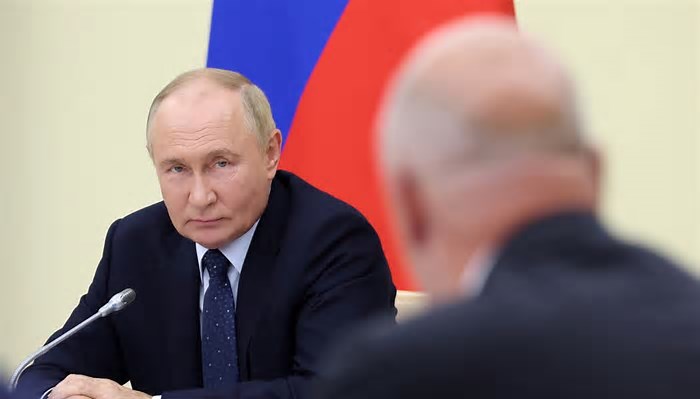Russian forces continued to clash with Ukrainian troops for a third consecutive day on Thursday after Ukrainian forces breached the Russian border in the Kursk region. This bold offensive against one of the world’s most powerful nuclear nations has compelled Moscow to summon reserves.
In what is considered one of the largest Ukrainian offensives on Russia during the two-year conflict, approximately 1,000 Ukrainian soldiers, supported by tanks, armored vehicles, drone swarms, and artillery, crossed the Russian border in the early hours of August 6, according to Russian officials. Intense fighting erupted near the town of Sudzha, a crucial location for Russian natural gas transit to Ukraine, sparking fears of a potential halt in gas flows to Europe. Despite the conflict, Ukrainian officials confirmed on Thursday that the gas transit route remained operational.
President Vladimir Putin described the Ukrainian attack as a “major provocation.” The White House, which supports Ukraine, stated it had no prior knowledge of the offensive and would seek further details from Kyiv. Valery Gerasimov, Russia’s chief of general staff, informed Putin on Wednesday that the Ukrainian advance had been stopped in the border area.
Russia’s defense ministry reported on Thursday that the army and the Federal Security Service (FSB) had halted the Ukrainian incursion and were engaged in combat with Ukrainian units in the Kursk region.
“Units of the Northern group of forces, along with the FSB of Russia, continue to eliminate armed formations of the Ukrainian Armed Forces in the Sudzhensky and Korenevsky districts of the Kursk region, near the Russian-Ukrainian border,” the ministry stated.
While the Ukrainian military has not commented on the Kursk offensive, President Volodymyr Zelenskiy commended the Ukrainian army on Thursday for its capability “to surprise” and achieve results, though he did not specifically mention Kursk.
Some Russian bloggers reported that Ukrainian forces were advancing towards the Kursk nuclear power station, located about 60 km (37 miles) northeast of Sudzha. Pro-Russian military blogger Yuri Podolyaka indicated that intense battles were occurring around 30 km from the Soviet-era nuclear plant, which supplies significant power to southern Russia.
The battles near Sudzha occur at a pivotal point in the conflict, the largest land war in Europe since World War Two. Kyiv is worried that U.S. support might wane if Republican Donald Trump wins the November presidential election. Trump has claimed he would end the war, prompting both Russia and Ukraine to seek the strongest possible negotiating positions on the battlefield.
Ukraine aims to pin down Russian forces, who control 18% of its territory, though the strategic importance of the border offensive remains unclear. Russian media reported that several thousand people were being evacuated from the Kursk region.
Former Russian president Dmitry Medvedev stated that the Ukrainian attack was an attempt to force Russia to divert resources from the front and demonstrate to the West that Ukraine remains capable of fighting. In response to the Kursk attack, Medvedev suggested that Russia should broaden its war objectives to encompass all of Ukraine.
“From this moment on, the SVO (Special Military Operation) should acquire an openly extraterritorial character,” Medvedev said, proposing that Russian forces should advance to Odesa, Kharkiv, Dnipro, Mykolayiv, Kyiv, “and beyond.” He concluded, “We will stop only when we consider it acceptable and profitable for ourselves.”



